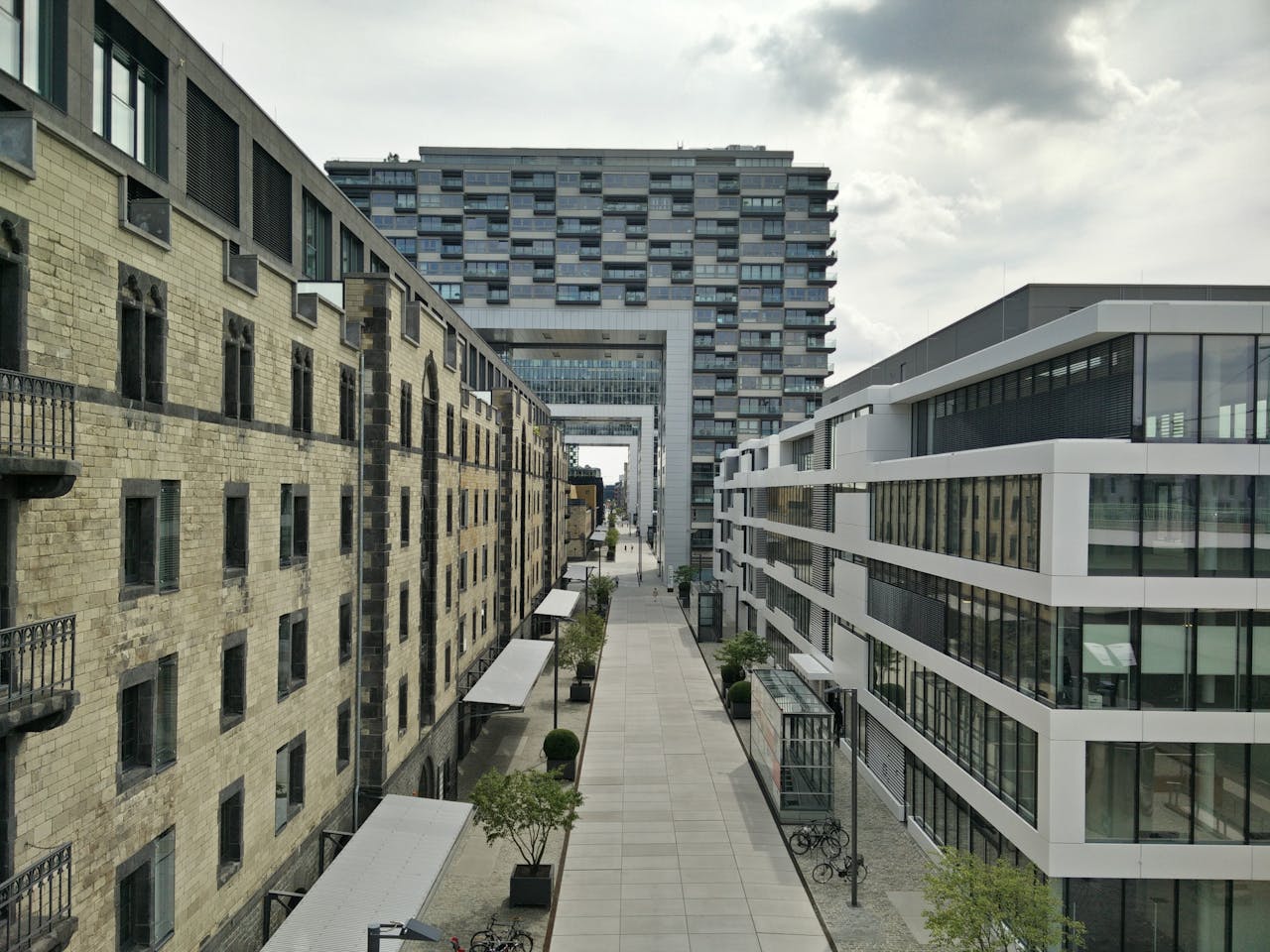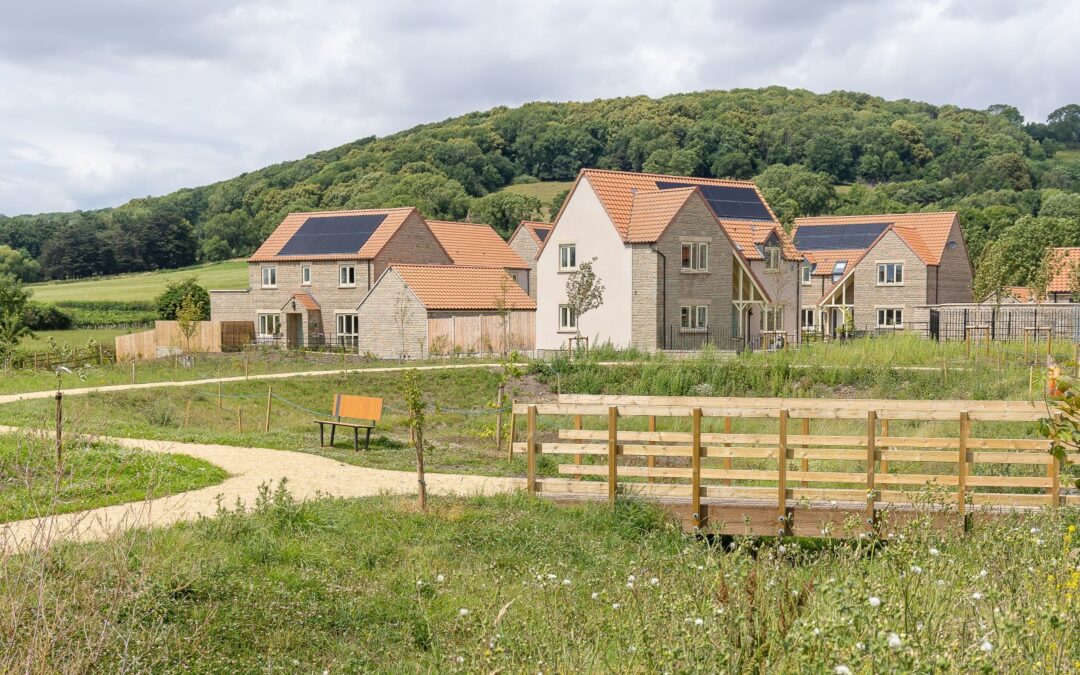Thinking of buying a property to rent out but don’t know where to invest?
We explore the average rental yields across the country and in London to help you gain a better understanding of your potential return on investment and find the best buy-to-let locations.
According to our latest data, the average gross rental yield in the UK is 4.4% in 2024. This has been calculated using the average property price and average monthly rent of properties on OnTheMarket. But how does each region compare?
Key takeaways
- The average gross rental yield in the UK is approximately 4.4%
- Highest gross rental yields by UK region are Scotland, Northern Ireland, and the North East
- Top gross rental yields by UK city are Belfast, Nottingham, and Glasgow
- By London borough, the highest gross rental yields are Barking and Dagenam, Newham, and Tower Hamlets
What’s covered?
Top UK regions for rental yields
Based on our regional data, the average gross rental yield across the UK is approximately 4.4%. This is the yield without taking into account the costs associated with owning and operating the property. In reality, the rental yield will be lower after you take mortgage repayments, insurance, taxes, and repairs into consideration.
The regions in the UK with the highest gross rental yields include Scotland with a yield of 5.96% and Northern Ireland at 5.83%. This is closely followed by the North East (4.84%), West Midlands (4.57%), and North West (4.51%). It is evident that the northern and midland regions boast lower average house prices, which help improve rental yields due to lower initial investment costs.
Meanwhile, despite having high average monthly rental prices. the South West (3.51%), London (3.65%) and East of England (3.65%) have the lowest rental yields.
| Rank | Region | Average gross rental yield | Average rental price | Average sale price |
| 1 | Scotland | 5.96% | £1,203 | £242,044 |
| 2 | Northern Ireland | 5.83% | £2,135 | £439,623 |
| 3 | North East | 4.84% | £935 | £231,895 |
| 4 | West Midlands | 4.57% | £1,336 | £351,059 |
| 5 | North West | 4.51% | £1,158 | £308,441 |
| 6 | Yorkshire and The Humber | 4.35% | £1,098 | £303,023 |
| 7 | East Midlands | 4.20% | £1,158 | £331,208 |
| 8 | Wales | 4.06% | £1,029 | £304,357 |
| 9 | South East | 3.71% | £1,676 | £542,270 |
| 10 | East of England | 3.65% | £1,421 | £467,127 |
| 11 | London | 3.65% | £2,841 | £935,205 |
| 12 | South West | 3.51% | £1,328 | £454,188 |
Top cities for rental yields in the UK
We looked at cities in the UK to identify those with the highest and lowest gross rental yields and help you choose the best buy-to-let locations.
Belfast is the best city for investors with the highest gross rental yield out of all cities analysed, with a yield of 13.12%. This is down to the high average rental price versus the relatively low average sale price. However, it is important to note that the high rental yields come as a result of the high-end, luxury and serviced apartments available at OnTheMarket. Many of these new rental properties boast contemporary furnishings, state-of-the-art amenities, and central locations, all of which come at a higher price point for renters.
After Belfast, we have Nottingham (8.02%), Glasgow (6.77%), Birmingham (6.58%), and Liverpool (6.57%), all of which are at least 2% higher than the national average.
| Rank | City | Average gross rental yield | Average rental price | Average sale price |
| 1 | Belfast | 13.12% | £2,428 | £222,000 |
| 2 | Nottingham | 8.02% | £1,592 | £238,069 |
| 3 | Glasgow | 6.77% | £1,241 | £219,894 |
| 4 | Birmingham | 6.58% | £1,718 | £313,323 |
| 5 | Liverpool | 6.57% | £1,056 | £192,955 |
| 6 | Manchester | 6.43% | £1,622 | £302,845 |
| 7 | Newcastle upon Tyne | 6.40% | £1,352 | £253,627 |
| 8 | Kingston-upon-Hull | 6.09% | £792 | £156,035 |
| 9 | Dundee | 6.04% | £923 | £183,347 |
| 10 | Stirling | 5.48% | £1,149 | £251,532 |
| 11 | Norwich | 5.47% | £1,436 | £315,300 |
| 12 | Salford | 5.21% | £1,195 | £275,179 |
| 13 | Exeter | 5.16% | £1,801 | £419,207 |
| 14 | Leeds | 5.15% | £1,431 | £333,526 |
| 15 | Bristol | 5.14% | £1,874 | £437,145 |
| 16 | Stoke-on-Trent | 5.05% | £809 | £192,091 |
| 17 | Edinburgh | 5.02% | £1,563 | £373,506 |
| 18 | Blackpool | 4.84% | £661 | £163,853 |
| 19 | Southampton | 4.83% | £1,272 | £316,201 |
| 20 | Portsmouth | 4.82% | £1,397 | £347,833 |
| 21 | Wolverhampton | 4.82% | £1,069 | £265,965 |
| 22 | Durham | 4.81% | £801 | £199,711 |
| 23 | Gloucester | 4.61% | £1,088 | £283,136 |
| 24 | Sunderland | 4.55% | £737 | £194,204 |
| 25 | Lincoln | 4.55% | £884 | £232,926 |
| 26 | Aberdeen | 4.54% | £855 | £226,154 |
| 27 | Milton Keynes | 4.48% | £1,556 | £416,931 |
| 28 | Brighton | 4.43% | £1,869 | £506,612 |
| 29 | Reading | 4.41% | £1,498 | £407,995 |
| 30 | Leicester | 4.35% | £1,023 | £282,010 |
| 31 | Swansea | 4.29% | £1,049 | £293,604 |
| 32 | Swindon | 4.29% | £1,065 | £297,930 |
| 33 | Oxford | 4.27% | £2,219 | £622,918 |
| 34 | Plymouth | 4.16% | £1,031 | £297,593 |
| 35 | Cardiff | 4.13% | £1,231 | £357,703 |
| 36 | Coventry | 4.11% | £1,133 | £275,388 |
| 37 | Middlesborough | 3.94% | £629 | £191,499 |
| 38 | Lancaster | 3.92% | £830 | £253,913 |
| 39 | Colchester | 3.92% | £1,320 | £403,812 |
| 40 | Derby | 3.86% | £858 | £266,599 |
| 41 | York | 3.84% | £1,288 | £402,099 |
| 42 | Newport | 3.81% | £937 | £295,135 |
| 43 | Peterborough | 3.81% | £984 | £309,536 |
| 44 | Bradford | 3.75% | £846 | £270,940 |
| 45 | Worcester | 3.75% | £987 | £316,006 |
| 46 | Sheffield | 3.73% | £891 | £286,335 |
| 47 | Canterbury | 3.73% | £1,355 | £435,500 |
| 48 | Wrexham | 3.71% | £904 | £292,074 |
| 49 | London | 3.65% | £2,841 | £935,205 |
| 50 | Carlisle | 3.63% | £787 | £260,136 |
| 51 | Chester | 3.60% | £1,113 | £371,311 |
| 52 | Bath | 3.47% | £1,833 | £634,117 |
| 53 | Wakefield | 3.45% | £808 | £281,446 |
| 54 | Chelmsford | 3.41% | £1,471 | £517,850 |
| 55 | Winchester | 3.40% | £1,859 | £655,535 |
| 56 | Southend-on-Sea | 3.38% | £1,241 | £440,748 |
| 57 | Lichfield | 3.37% | £1,290 | £459,970 |
| 58 | Preston | 3.32% | £985 | £355,877 |
| 59 | Cambridge | 3.19% | £1,669 | £628,756 |
| 60 | Chichester | 3.19% | £1,627 | £611,841 |
| 61 | Doncaster | 3.19% | £1,627 | £611,841 |
| 62 | St Albans | 2.95% | £1,880 | £765,861 |
| 63 | Bournemouth | 2.86% | £1,355 | £567,694 |
| 64 | Hereford | 2.80% | £994 | £425,253 |
| 65 | Perth | 2.68% | £793 | £355,316 |
Top London boroughs for rental yields
London, while commanding the highest rental price at £2,841, delivers a modest 3.65% average yield due to steep average sale prices of £935,205. Yet, while London may have one of the lowest gross rental yields across the UK, there are certain boroughs within the capital city that may be more profitable than others.
Coming in on top, we have Barking and Dagenham with a gross rental yield of 6.16%, followed by Newham (5.74%), Tower Hamlets (5.36%), Greenwich (4.79%), and Croydon (4.57%). These five London boroughs all provide gross rental returns higher than the UK average. On the other hand, the boroughs with the lowest rental yield include Westminster (1.94%), Kensington and Chelsea (2.06%), Camden (2.71%), and Barnet (2.83%), all of which are roughly half of the national average.
| Rank | London Borough | Average gross rental yield | Average monthly rent | Average property price |
| 1 | Barking and Dagenham | 6.16% | £1,844 | £359,232 |
| 2 | Newham | 5.74% | £2,212 | £462,049 |
| 3 | Tower Hamlets | 5.36% | £2,751 | £615,419 |
| 4 | Greenwich | 4.79% | £2,141 | £536,102 |
| 5 | Croydon | 4.57% | £1,801 | £472,514 |
| 6 | Waltham Forest | 4.57% | £2,021 | £530,352 |
| 7 | Bexley | 4.52% | £1,713 | £454,723 |
| 8 | Sutton | 4.40% | £1,879 | £512,826 |
| 9 | Southwark | 4.36% | £2,685 | £739,730 |
| 10 | Havering | 4.29% | £1,894 | £530,278 |
| 11 | Hounslow | 4.26% | £2,222 | £625,740 |
| 12 | Hillingdon | 4.25% | £1,912 | £539,521 |
| 13 | Lewisham | 4.21% | £1,830 | £521,701 |
| 14 | Harrow | 4.03% | £1,970 | £586,496 |
| 15 | Islington | 3.95% | £2,816 | £855,024 |
| 16 | Wandsworth | 3.93% | £3,201 | £977,449 |
| 17 | Ealing | 3.91% | £2,105 | £646,110 |
| 18 | Enfield | 3.90% | £1,964 | £603,756 |
| 19 | Brent | 3.84% | £2,176 | £679,529 |
| 20 | Redbridge | 3.71% | £1,717 | £555,318 |
| 21 | Bromley | 3.69% | £1,856 | £603,200 |
| 22 | Lambeth | 3.69% | £2,711 | £881,701 |
| 23 | Kingston upon Thames | 3.62% | £2,407 | £797,236 |
| 24 | Hackney | 3.56% | £2,835 | £955,829 |
| 25 | City of London | 3.39% | £4,020 | £1,423,798 |
| 26 | Hammersmith and Fulham | 3.36% | £3,270 | £1,169,417 |
| 27 | Merton | 3.29% | £2,389 | £870,407 |
| 28 | Haringey | 3.28% | £2,117 | £774,337 |
| 29 | Richmond upon Thames | 3.15% | £2,921 | £1,111,306 |
| 30 | Barnet | 2.83% | £2,318 | £982,805 |
| 31 | Camden | 2.71% | £3,434 | £1,520,318 |
| 32 | Kensington and Chelsea | 2.06% | £4,141 | £2,414,350 |
| 33 | Westminster | 1.94% | £4,220 | £2,608,207 |
What is rental yield?
Rental yield is a measure of the potential return on investment landlord’s will earn from a rental property. It represents the annual rental income generated by a property as a percentage of its purchase price or market value.
The gross rental yield refers to rental yield only, not taking into account any associated costs of owning and maintaining the property. Whereas, the net rental yield is a more accurate reflection of your return on investment, factoring in the costs of owning and operating the property, such as insurance fees, taxes, and maintenance.
How do you calculate gross rental yield?
The formula for calculating rental yield is: (Annual rent / property value) x 100 = gross rental yield
Let’s look at an example…
If you buy a property for £500,000 and charge your tenants £2,000 per month in rent, this will total £24,000 per year. To get your rental yield, divide 24,000 by 500,000 and multiply the total figure by 100, which brings you to a gross yield of 4.8%.
How do you calculate net rental yield?
To work out net rental yield, you’ll first need to collate all the expenses of owning and operating your rental property. This will be unique to every landlord, but typically includes costs such as insurance, utilities, property management fees, taxes, and maintenance. Once you know this, you can get calculating using the following steps:
1. Work out the annual rental income, which is monthly rent × 12
2. Sum up all the annual expenses related to the property
3. Calculate net annual income, which is the annual rental income − annual expenses
4. Figure out the net rental yield by dividing the annual income by the property price and multiply by 100 to get the percentage yield
Net rental yield = (net annual income/property purchase price) × 100
Let’s look at an example…
You buy a house for £500,000 and charge £2,000 rent per month, but spend a total of £5,700 per year on expenses.
Annual rental income: 2,000 x 12 = 24,000
Net annual income: 24,000 – 5,700 = 18,300
Net rental yield: (18,300/500,000) × 100 = 3.66%
What is a good rental yield?
Calculating rental yield is crucial before investing in a buy-to-let or build-to-rent property as it gives you an indication of your return on investment. You want to make sure you know your property purchase is worth it and won’t put you in financial losses. But what is a good rental yield to aim for?
Well, it depends entirely on the location it’s in and the type of property you have. For example, in urban areas with high-demand, a gross rental yield of around 4-6% is considered ‘good’. In more rural areas or suburbs, you can expect higher yields of around 5-8% due to lower property prices in comparison to rental income. For commercial properties, a good yield is even higher at around 6-12%. Make sure to do your research as every area will differ.
Is rental yield the only deciding factor?
In addition to rental yield, there are multiple factors you should take into consideration when choosing a buy-to-let property, including housing price trends, the cost of taking out a buy-to-let mortgage, and tenant demand. If there isn’t much demand for rental properties in a certain area, then it’s probably not a wise investment. We advise you to speak to local lettings agents to suss out an area before purchasing a rental property.
Another important factor to consider is the property itself. Older properties often come with higher repair and maintenance costs than new builds, which means you may find yourself having some expensive bills to pay sooner than you might expect. That’s why property surveys are key!
Better yet, build-to-rent properties are built to purpose, meaning your investment property is built to the highest standards from the start without any nasty surprise costs, and a structural warranty to cover you.
What does the buy-to-let market hold in 2024?
A spokesperson at OnTheMarket comments:
“As property prices stay relatively stagnant this year but monthly rent rises, rental yields are expected to increase in 2024. This trend is likely to make buy-to-let investments more attractive to investors seeking higher returns, however, it is essential that you also consider factors such as interest rates, regulatory changes, and maintenance costs. As always, it’s advised that you seek guidance from local lettings professionals and conduct careful financial planning for any property venture.”
Are you looking for your next property investment? Learn more about build-to-rent properties for landlord’s with OnTheMarket.






